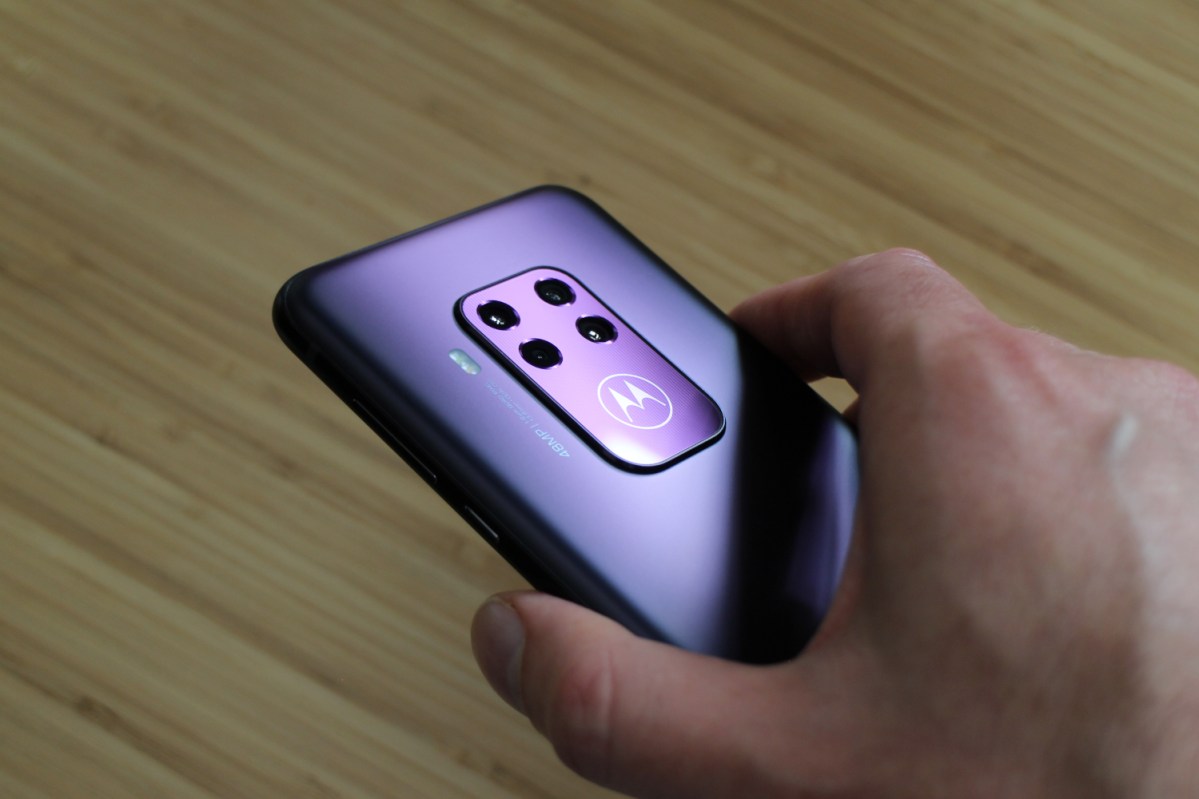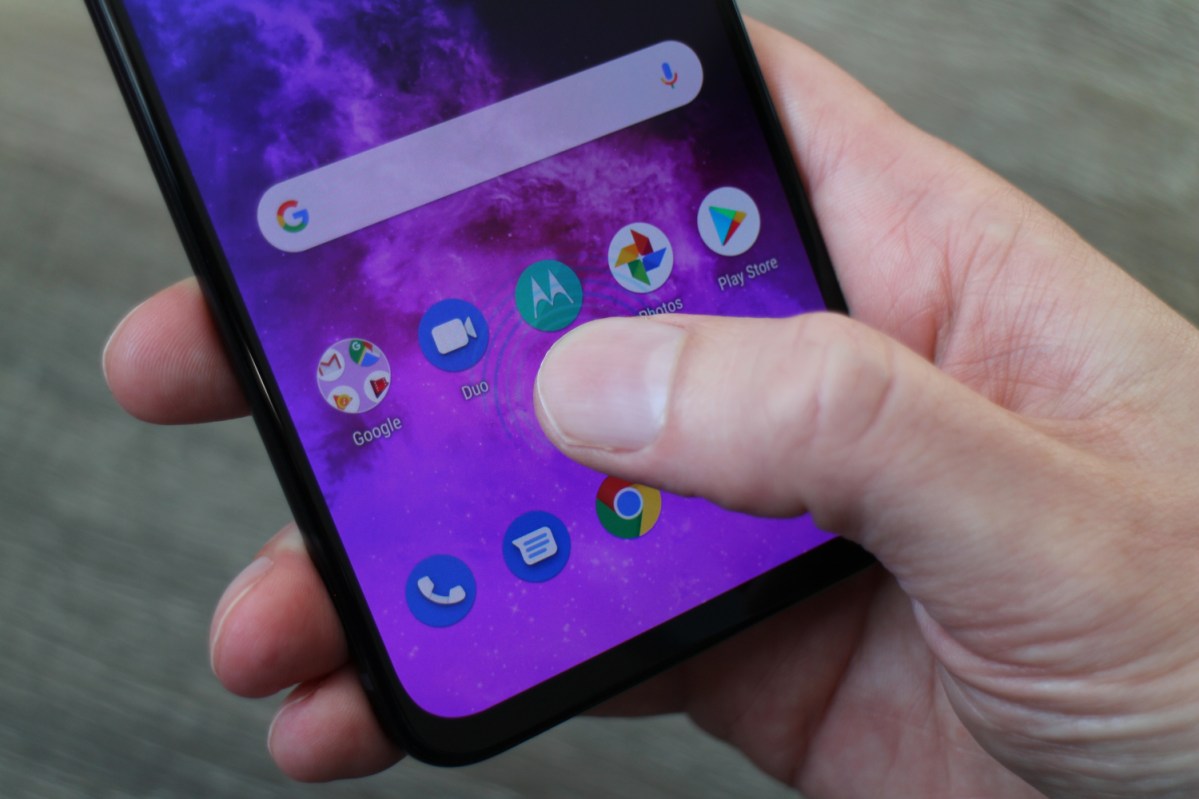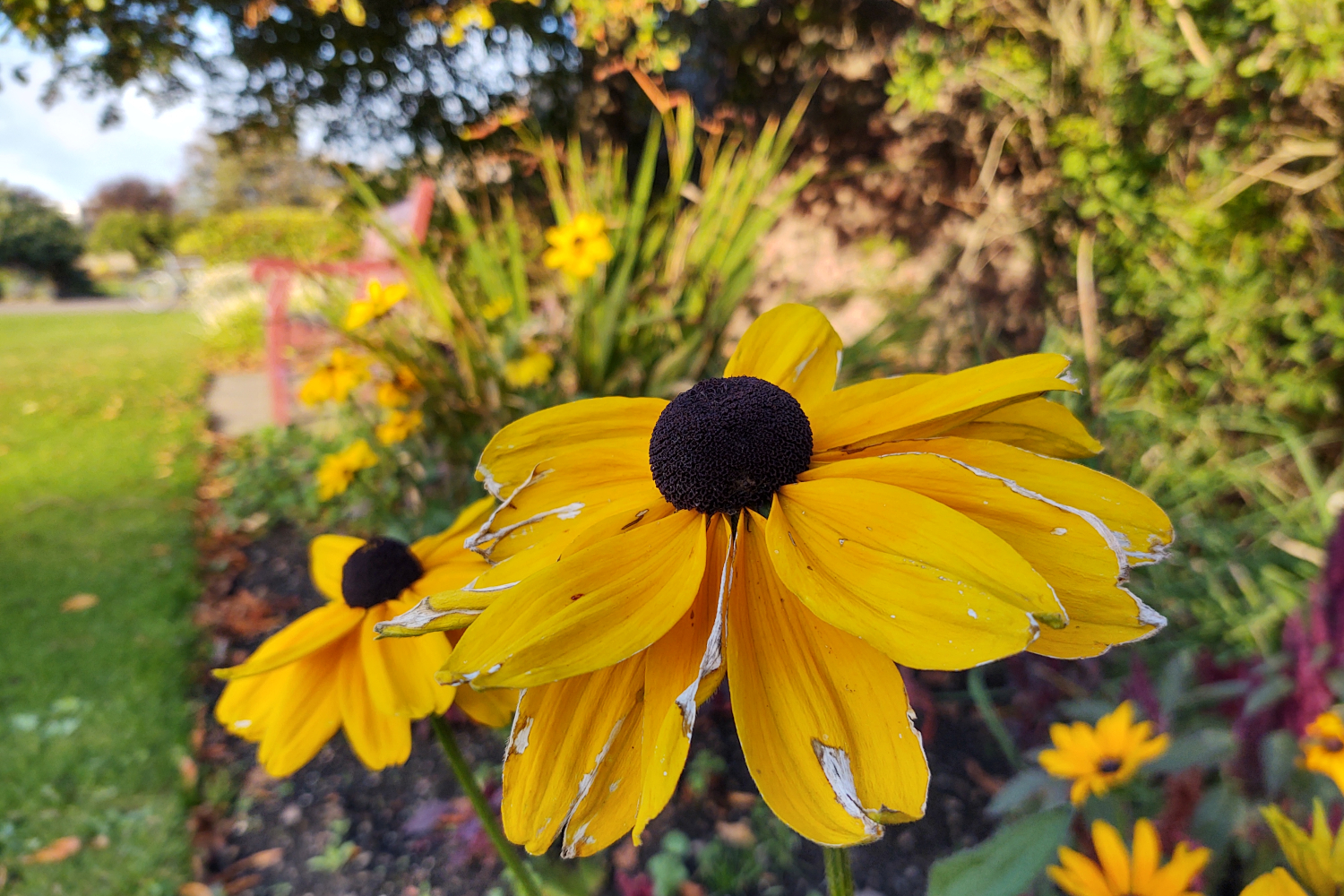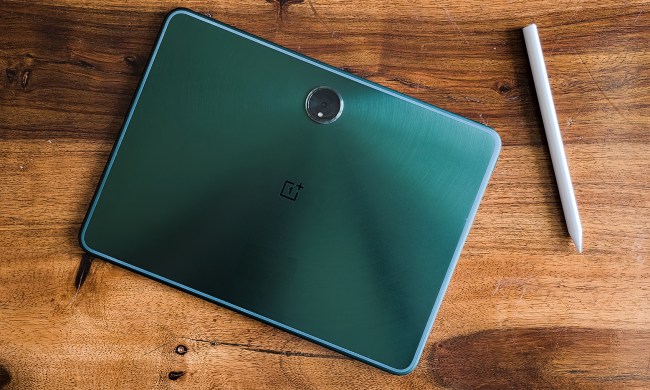- Versatile quad-camera system
- Large, beautiful display
- Beefy battery
- Beautiful purple finish
- Uncluttered Android software
- Substandard software support
- Finicky fingerprint sensor
- Only works on AT&T and T-Mobile
With a stylish purple finish, a quad-lens camera, and a 6.4-inch OLED screen, the Motorola One Zoom defies expectations for a $450 phone. Bringing flagship features and design trends down to the more affordable end of the market has been a mainstay of Motorola’s mobile strategy, and this midrange marvel is no exception.
There’s no doubt the Motorola One Zoom looks like an irresistible bargain at first glance, but what happens when you zoom in further? Have corners been cut elsewhere to achieve these highlights? There are a lot of great budget phones available right now, including the $500 Asus Zenfone 6 and the $400 Google Pixel 3a, so I tried living with the One Zoom to find out exactly where it fits in.
Ramping up the style
The Motorola One Zoom has a snazzy purple suit that the Joker would be proud of. Forget about the Electric Gray and Brushed Bronze color options, the Cosmic Purple is simply out of this world. The Motorola One Zoom is a big phone, too, and it’s heavy. If you prefer the Marvel universe to DC, it’s the kind of phone Thanos would choose.

With a clever micro-texture on the matte glass back, the Motorola One Zoom manages to shirk smudges and fingerprints. The quad-lens camera is contained within a central rectangle with rounded corners, and what’s even cooler is the classic Motorola logo, which lights up when the screen is on and doubles as a notification LED when your phone is face down.
It’s a surprisingly beautiful design, with a pleasing symmetry that’s a more attractive way of containing multiple lenses than the offset squares on Apple’s iPhone 11 Pro or Google’s forthcoming Pixel 4. The camera bump does protrude a bit, so you’ll likely want to think about a case, though it’s a crime to cover up this finish.
This is the best-looking phone Motorola has turned out in years.
There’s a textured power button on the right edge of the aluminum frame with a volume rocker above, and you’ll find a USB-C port and a 3.5mm audio port on the bottom edge. Around the front there’s an impressively large 6.39-inch screen with a teardrop notch at the top for the front-facing camera and a bezel at the bottom. The 2.5D glass on the front curves slightly into the edges, making the Motorola One Zoom feel elegant. If you’re wondering about the lack of a fingerprint sensor — it’s in the display.
Considering the size and weight, the Motorola One Zoom is relatively easy to handle and comfortable to hold, though if you prefer a small phone it’s probably not for you. Nevertheless, this is the best-looking phone Motorola has turned out in years.
A huge display
That 6.39-inch screen has a tall 19:9 aspect ratio and a 2,340 x 1,080-pixel resolution. I’m pleased that it’s an OLED screen because it means much better contrast and it also makes reading in bed much more comfortable as there’s no backlight. Colors don’t look over-saturated and it’s plenty sharp, but the brightness doesn’t go quite as high as I’d like, leaving me squinting in direct sunlight.
I also had some issues with the adaptive brightness kicking in too often and tweaking the brightness while I was gaming in a way that was distracting. I may have been inadvertently covering the sensor while holding the One Zoom in landscape orientation, but it persisted after I adjusted my grip and in the end, I had to turn it off.

Minor issues aside, this is a great screen for gaming, watching movies, as well as reading, and it’s a surprise to find a screen this big and this nice at this price. The Asus Zenfone 6 has a screen the exact same size and resolution, but the inferior LCD panel doesn’t match up.
The Motorola One Zoom also offers an always-on-display, so you can bring it to life to see the time, date, battery, and notifications with the slightest of touches.
The biggest disappointment is that there’s only one speaker here, as it doesn’t get very loud, but Motorola has included a 3.5mm audio port, so headphones are the way to go.
Incredibly versatile camera
The real highlight of the Motorola One Zoom is the versatile camera, so let’s dive straight in. You’ve got a main 48-megapixel lens with a large f/1.7 aperture — the lower the number the more light it can let in. That’s supported by an 8-megapixel telephotos lens and both have optical image stabilization. There’s also a 16-megapixel wide-angle lens with a 117-degree field of view, and a 5-megapixel depth sensor to capture better portrait mode photos. Around front on the Motorola One Zoom, there’s a 25-megapixel selfie camera with an f/2.0 aperture.

Megapixels are far from the only important factor in good mobile photography, so do we need 48-megapixel cameras? Much depends on how the image is processed. Most of the phones with 48-megapixel cameras, from the Asus Zenfone 6 to the Motorola One Vision, to the OnePlus 7 Pro are using a process called pixel binning which merges pixels together to improve the quality of the final image, which nets out at 12 megapixels. The front-facing camera here uses the same pixel binning technique to get maximum light for your selfies and actually produces 6.25-megapixel photos.
The hardware is only one part of the story, great smartphone photography depends on image processing, which is why Google’s $400 Pixel 3a can turn out wonderful photos with a single lens.
The Motorola One Zoom’s camera is every bit as versatile as you’d hope. It captures colors well, close-ups are packed with detail, and it does quite a good job of balancing mixed lighting. Noise does creep up in a little at times, but there’s a Night Mode that prompts you when light is low and it does a fairly good job. One downside is the image processing can take a few seconds, which does make the phone feel under-powered at times.
The telephoto lens allows for 3x optical zoom. It can even go to 10x hybrid zoom, but the results aren’t generally strong at that level. Still, the versatility here is impressive. Here’s the Motorola One Zoom camera going from ultra-wide to normal to 3x zoom.
You can see a little bit of distortion at the edges when you use the ultra-wide-angle lens, and the telephoto lens at 3x zoom washes out some of the colors, but there’s plenty of detail. Motorola also offers a pro mode that allows you to tweak settings to your heart’s content. All the photos in this review were taken using the automatic settings because that’s what most people will use.
While there are definite flaws with Motorola’s portrait mode, in that it struggles to blur hairlines correctly, it does manage to produce shots I like a lot of the time. But it really requires a stationary subject and you have to take some time to get the distance between you and the subject right. There’s a slider option on the right to let you tweak the amount of blur, but crank it up too high and some of the results look weird.
Befitting the name, the Motorola One Zoom has the most powerful zoom capability in this price bracket and the camera app is packed with options to help you get creative, but a lot of it feels gimmicky and unintuitive. If you’re prepared to experiment or you long to get creative with your camera, then the One Zoom could be a good option for you, but if you just want to point and shoot and get great photos without thinking about it, the Pixel 3a will serve you better.
Performance is on par with the competition
The Motorola One Zoom is packing a Qualcomm Snapdragon 675 processor and there’s 4GB of RAM. That’s a fairly typical midrange setup nowadays and it’s good enough to run demanding games and apps. I played Call of Duty: Mobile and it ran smoothly enough for me to rack up a decent body count in multiplayer.
Here are some benchmark results:
- AnTuTu 3DBench: 175,629
- Geekbench 5 CPU: 506 single-core; 2,104 multi-core
- 3D Mark Sling Shot Extreme: 1,065 Vulkan; 981 OpenGL
These are solid results and they compare favorably to the Pixel 3a, which scored 159,554 in AnTuTu. But consider the Asus ZenFone 6, which is powered by the same chipset that’s inside phones like the Galaxy Note 10 Plus. It costs just $50 more, and scored 361,821.
The Motorola One Zoom’s camera is every bit as versatile as you’d hope.
The performance the Motorola One Zoom offers is enough for almost all tasks, but I did encounter the occasional dropped frame and some lag in demanding games and in the camera app in particular. It also got quite hot when I used the camera for an extended period of time.
The Motorola One Zoom has 128GB of internal storage and there’s room for a MicroSD card if you should need to expand space.
No Android One
It’s frustrating, and a little confusing considering the name, that the Motorola One Zoom isn’t part of the Android One program. When Motorola launched the One series, it was going to feature a line-up of Android One phones. The great thing about Google’s program is that it ensures a bloatware-free experience, along with three years of security updates and two years of Android version upgrades. That has traditionally been a problem with cheaper phones, which are frequently left behind in terms of support.

For the One Zoom Motorola is only promising one Android version upgrade and “industry-related” security updates. That means this phone will get Android 10, but nothing beyond that. Security patches will arrive only when huge vulnerabilities are revealed. That’s incredibly disappointing, because affordable phones like the Pixel 3a and the Nokia 7.2 offer strong software support, and Motorola’s customers deserve the same.
Thankfully, the Motorola One Zoom does offer a close to stock Android 9 Pie experience. It’s uncluttered and simple to use, just as it should be, though Motorola has added the usual batch of gestures for things like quickly turning on the flashlight. There’s also the always-on-display option which is quite handy, showing you pertinent info without you having to unlock your phone.
Speaking of unlocking your phone, the Motorola One Zoom features an in-display fingerprint sensor. It’s a bit jittery at first and I found it required two or sometimes even three attempts to unlock, but if you persist, you’ll find that it does improve. Motorola said it employs machine learning to get better. After a week it unlocks for me on the first attempt more than half the time, but it’s still not as reliable as a traditional capacitive fingerprint sensor, or the ultrasonic in-display sensor in the Samsung Galaxy S10, for example.
Stunning stamina
The 4,000mAh battery in the Motorola One Zoom is capable of going two days between charges if you aren’t gaming or using the camera a lot.

It lasted for 11 hours and 14 minutes in our YouTube streaming video test, which is a little better than the ZTE Axon 10 Pro, but a little less than the Asus Zenfone 6 which boasts an enormous 5,000mAh capacity. The Pixel 3a lasted 9 hours and 12 minutes in the same test. Battery life is definitely a strong point here and I never worried about the Motorola One Zoom running out of juice when I was out and about.
Sadly, there’s no wireless charging, but that’s par for the course at this price. It does come with an 18W TurboPower charger though, which makes for decent charging speeds when plugged in.
Price, warranty, and availability
The Motorola One Zoom is available in the U.S. now from Motorola’s website for $450. It only works on GSM networks like T-Mobile and AT&T, though. You can also buy it in Europe, with a price tag of 439 euros.
You get a standard one-year limited warranty for manufacturing defects and faults. If you buy from Motorola, you do have an option to add extended support with Moto Care for another year for $40, or accident protection at $60 for 15 months or $95 for two years, which includes free shipping.
Our Take
This is one of the most stylish phones Motorola has ever released and it offers a truly versatile camera, plenty of stamina, and a wonderful big display, which are easily enough to justify the $450 price. If only Motorola had stuck with Android One and honed the camera experience with a focus on quality over quantity, the Motorola One Zoom would have scored a stronger recommendation.
Are there better alternatives?
There’s the $500 Asus ZenFone 6 which has a strong camera, a beefier battery, and far superior performance. You may even consider the $550 ZTE Axon 10 Pro which also offers better performance, a capable camera, and similar battery life. Or you could save yourself some cash with the $400 Pixel 3a which boasts great photography, slick software, and Google support for years to come. The lack of support and limited processing power are likely to be what prompts you to upgrade.
Our round-up of the best cheap phones offers more options. If budget isn’t a concern, check out our favorite phones of 2019.
How long will it last?
It’s a big glass phone, so relying on the Panda King glass that protects the screen and the Corning Gorilla Glass 3 that protects the rear is a gamble — a case is sensible. There’s no IP rating for water resistance, but it does have a P2i splash-proof coating. Properly looked after, it should last you at least a couple of years.
Should you buy it?
Yes. If you like the look, want a big screen, and love to tweak camera settings, the Motorola One Zoom could be your ideal phone.















